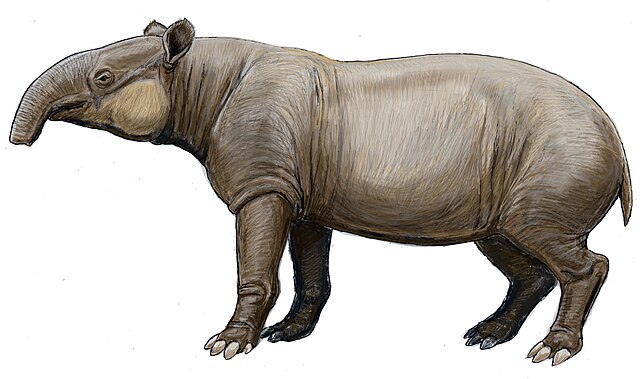Paul Schultz Martin was an American geoscientist at the University of Arizona who developed the theory that the Pleistocene extinction of large mammals worldwide was caused by overhunting by humans. Martin's work bridged the fields of ecology, anthropology, geosciences, and paleontology.
Paul Martin at Rampart Cave, home of the Shasta ground sloth in Grand Canyon, ca. 1975
Paul Martin's "overkill hypothesis" prevails over the climate hypothesis when the timing of megafaunal extinctions in different locales is considered — especially when paired with time of first arrival by humans.
Paul Schultz Martin, 2008, holding a dungball of the extinct Shasta Ground Sloth, with whom Martin claimed to have "a totem relationship."
Native fruits of North America with anachronistic features.
Late Pleistocene extinctions
The Late Pleistocene to the beginning of the Holocene saw numerous extinctions of predominantly megafaunal animal species, which resulted in a collapse in faunal density and diversity across the globe. The extinctions during the Late Pleistocene are differentiated from previous extinctions by the widespread absence of ecological succession to replace these extinct megafaunal species, and the regime shift of previously established faunal relationships and habitats as a consequence. The timing and severity of the extinctions varied by region and are thought to have been driven by varying combinations of human and climatic factors. Human impact on megafauna populations is thought to have been driven by hunting ("overkill"), as well as possibly environmental alteration. The relative importance of human vs climatic factors in the extinctions has been the subject of long-running controversy.

Late Pleistocene in northern Spain, by Mauricio Antón. Left to right: wild horse; woolly mammoth; reindeer; cave lion; woolly rhinoceros
Mural of the La Brea Tar Pits by Charles R. Knight, including sabertooth cats (Smilodon fatalis, left) ground sloths (Paramylodon harlani, right) and Columbian mammoths (Mammuthus columbi, background)
The proportion of extinct large mammal species (more than or equal to 10 kg (22 lb)) in each country during the last 132,000 years, only counting extinctions earlier than 1000 years BP
Giant tapir (Tapirus augustus) restoration








